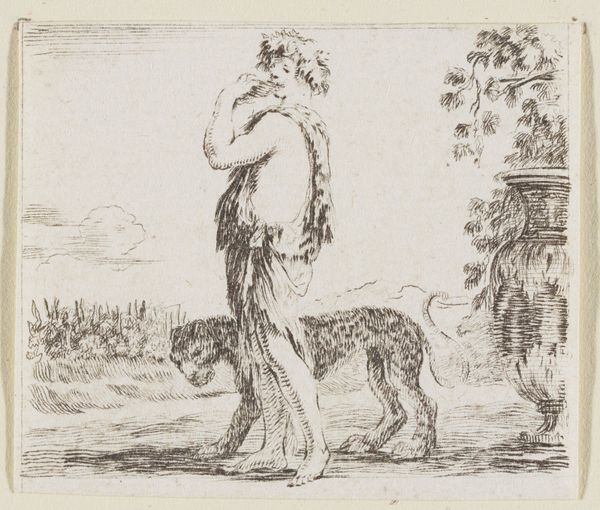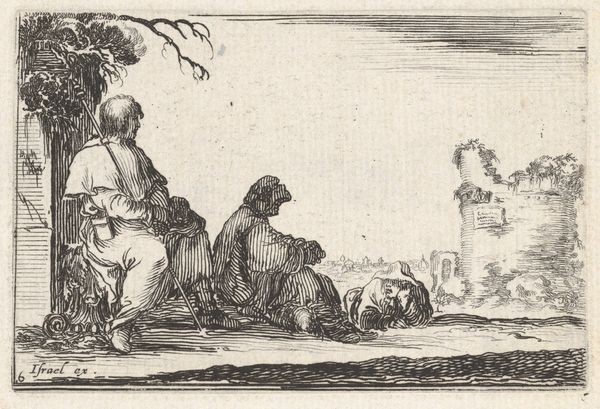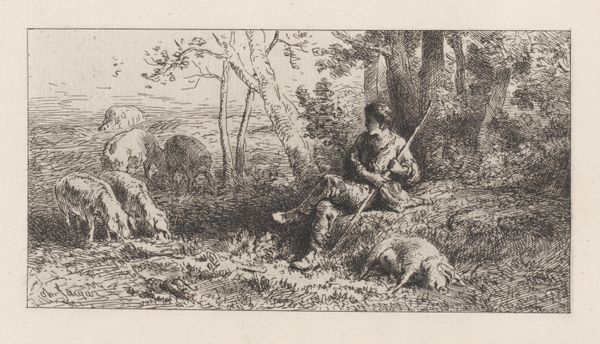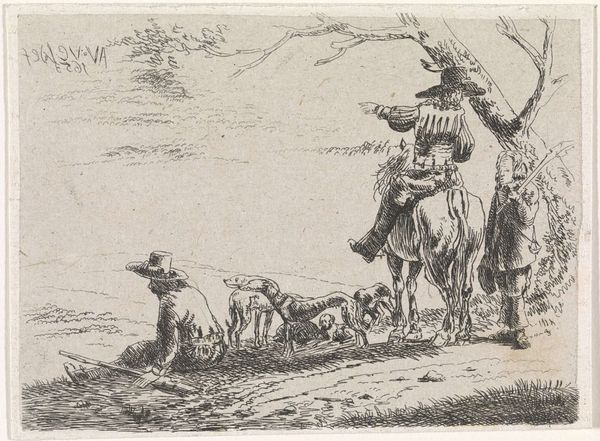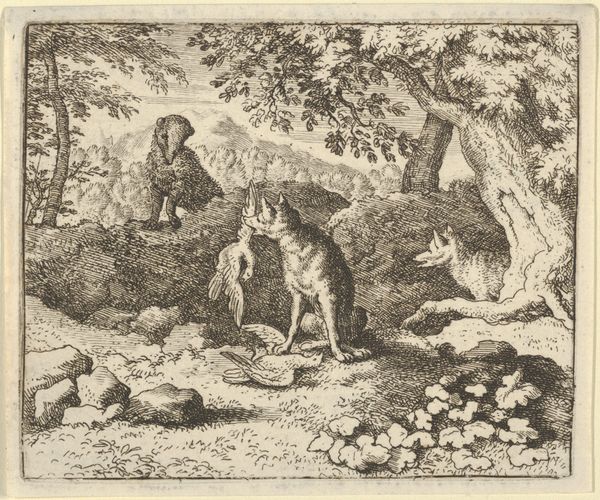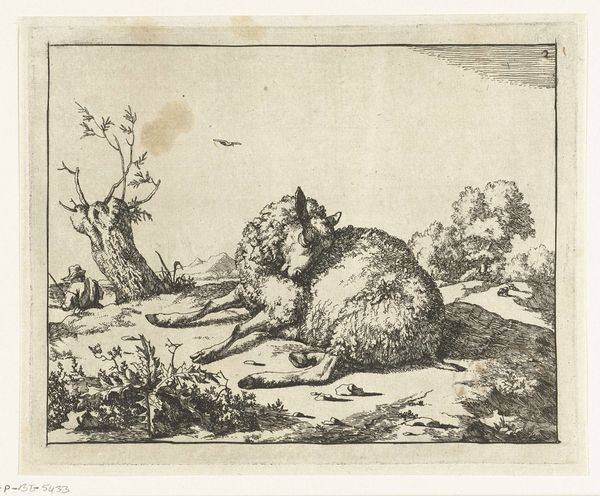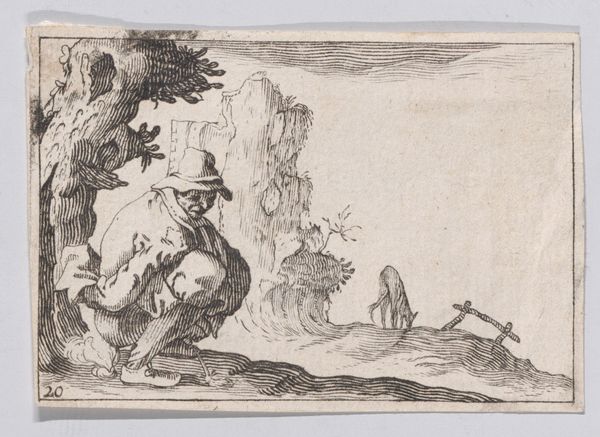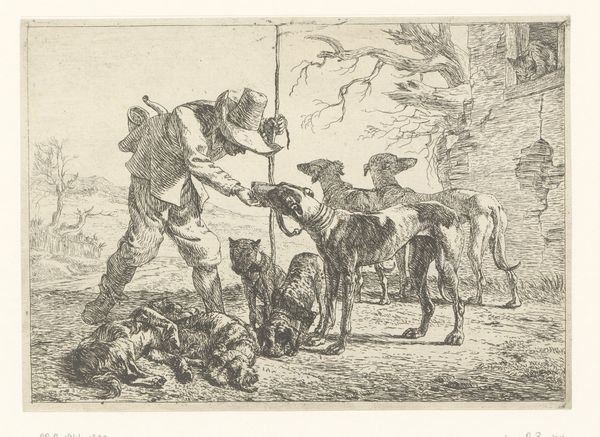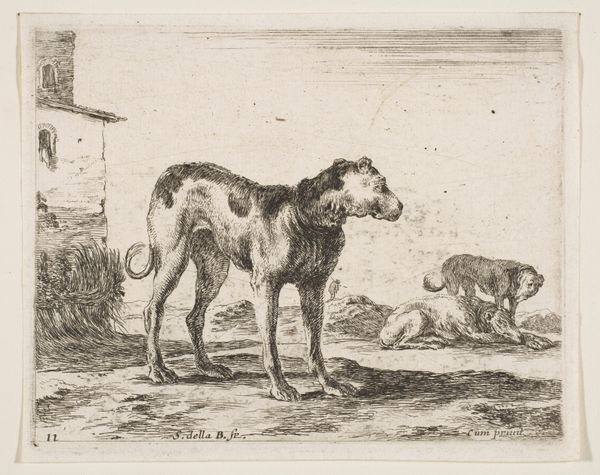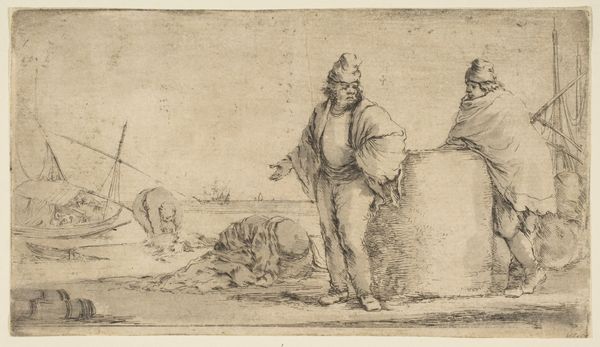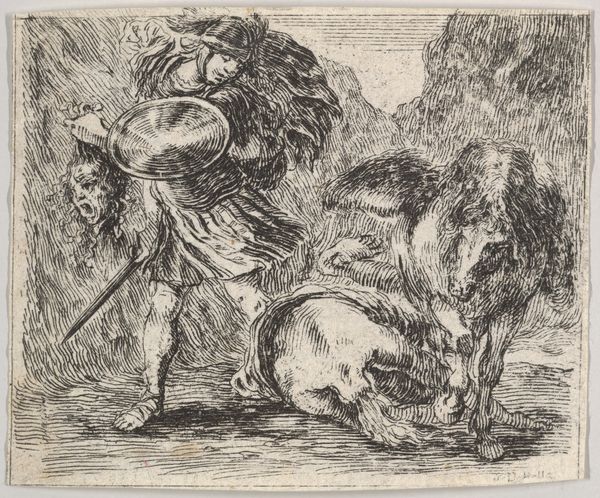
drawing, print, etching
#
drawing
# print
#
pen sketch
#
etching
#
pencil sketch
#
dog
#
landscape
#
figuration
#
realism
Dimensions: height 84 mm, width 114 mm
Copyright: Rijks Museum: Open Domain
Curator: This etching, simply titled "Twee honden," or "Two Dogs," is attributed to David van der Kellen and thought to date somewhere between 1814 and 1879. Editor: What a wonderfully intimate scene! I'm immediately struck by the quiet tenderness emanating from this unassuming work. It’s almost photographic in its candid capture of domesticity. Curator: Van der Kellen occupied a vital position in Dutch society as the director of the Royal Medal Cabinet, where he actively shaped numismatic scholarship and practice, as well as advising the design and production of medals and prints, imbuing even a simple scene with weight. Editor: It's the symbolism of loyalty and companionship that resonates for me, really speaking to how deeply ingrained these animals are in the human psyche. The contrast in the dogs themselves seems telling too – one alert and upright, a sentinel perhaps, whilst the other is curled and relaxed, seeking solace, their bond providing them both. Curator: Precisely. This work gains particular historical and social importance by understanding its medium—a widely accessible and circulating print, reaching numerous households to underscore the ideals of family values, which became especially prominent in the rising middle class of 19th-century Holland. Editor: You are right! And looking closer, I notice even the bowl in the foreground is a potent image—representing provision, domestic care, perhaps even nurturing instincts. It’s amazing how the humble domestic dog can elicit these complex reflections on family, society, and human values. Curator: It's precisely that delicate balance that defines Van der Kellen’s work and its impact on popularizing cultural values—a quiet commentary rendered with deft lines and tonal subtleties. Editor: This brief glimpse into the 19th century highlights that universal affection for animals, while adding new layers to its historical reception for our modern context.
Comments
No comments
Be the first to comment and join the conversation on the ultimate creative platform.
